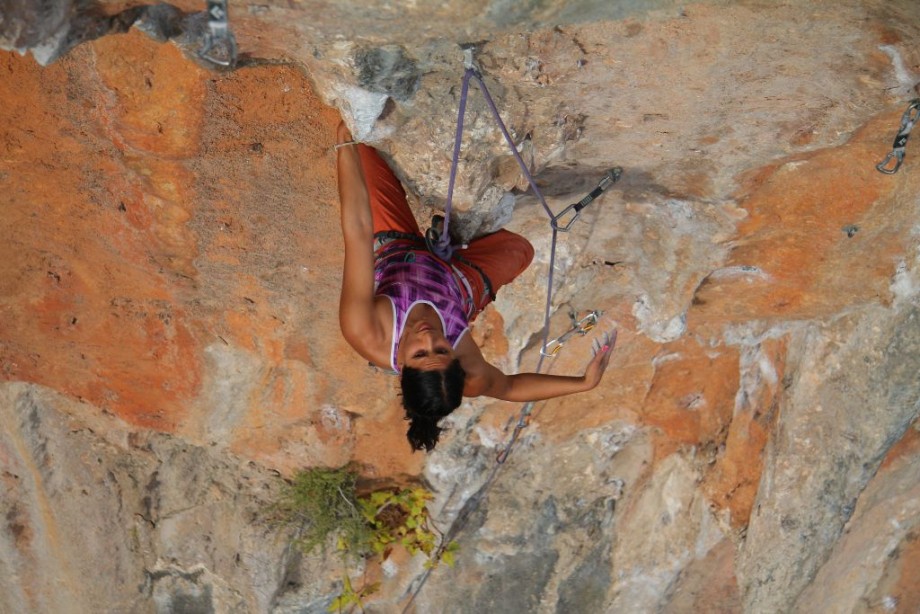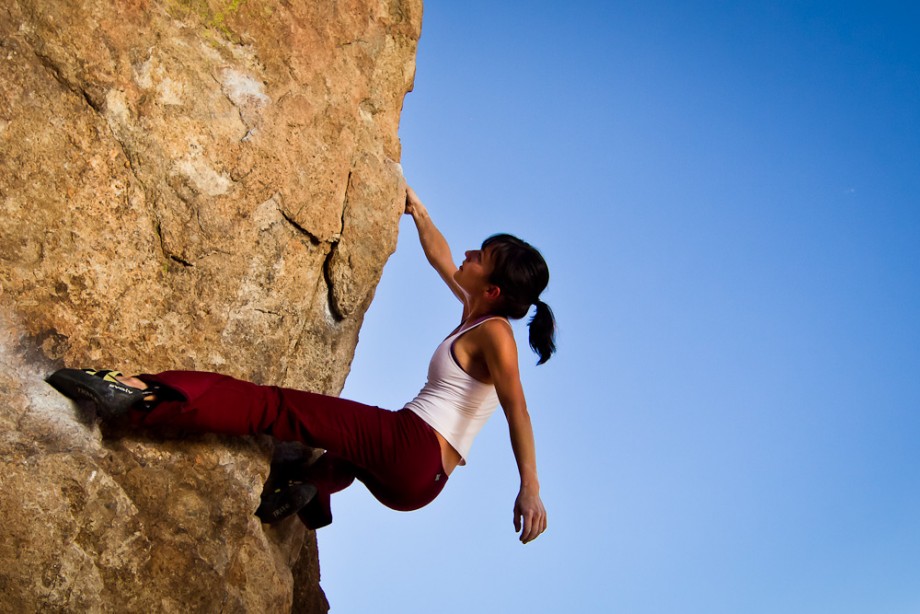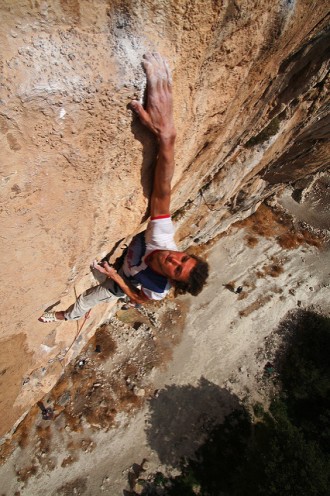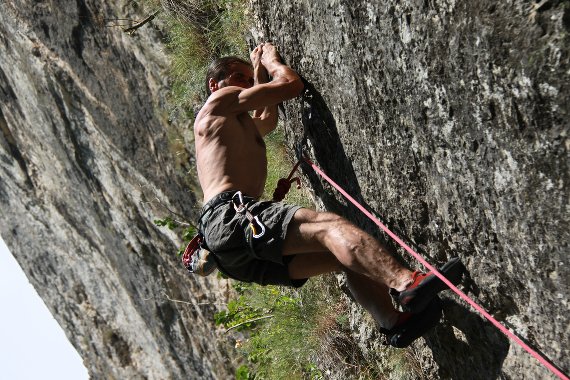After 10 minutes of hanging off the anchor of Orange Juice at the Red River Gorge, my belayer yells up to me.
You okay up there?
I had spent the last several minutes wrestling with my figure eight knot so I could untie, rethread my rope through the anchors, and clean the route. Eventually I gave up and accepted the situation:
I can’t untie my knot dude. And I’m not just saying that. I actually can’t untie it,
I said.
Why not? Did it synch down really tight?
My knot had in fact synched quite a bit because I had taken a few big falls on the route, but this was not the root of the problem.
Kinda. I’m honestly just too pumped to untie it. I can’t even move my fingers.
After resting at the anchor for almost 15 more minutes, I finally had the strength to untie my knot. While the route is definitely a pumpy one, I could have avoided and managed the pump in my forearms much better. There are some simple techniques I could have used to avoid falling due to pumped muscles … and I definitely wouldn’t have had to rest for 20 minutes just to untie my knot.
What is “getting pumped?”
Just in case you haven’t noticed already, this is not an article about how to avoid “getting pumped” as in getting psyched, stoked, or excited. I would never publish an article about avoiding one of the greatest emotions that our sport provides!
The kind of pump I’m talking about is the tight, swollen, burning, and sometimes painful feeling that occurs in our forearms when we’re climbing as a result of lactic acid build up. This occurs most often in roped climbing, as pump is usually a result of doing many moves in a row. It is possible to get pumped while bouldering, too, especially if the the boulder problem consists of many moves or if the climber is scared.
Seven techniques to prevent climbing pump
1. Breathe
Breathing properly is probably the most important aspect of climbing performance and managing pump. Not only does it deliver oxygen to your tired muscles to help them recover and perform, but breathing will also help you employ every other subsequent technique mentioned in this article. It’s important to note that taking short, rapid breaths while climbing will cause you to get pumped even if the terrain you’re climbing on isn’t that difficult for you.
When to use this technique:
Obviously you’ll be breathing the entire time you’re climbing (and living) but there are different breathing techniques to use depending on what kind of climbing you’re doing. Check out this article on how to breathe properly while climbing for more on this topic.
2. Shake
It’s amazing how helpful just a few quick shakes of your arms can be to avoid getting pumped. We see a lot of climbers shaking as their arms dangle by their sides. This is a great technique, but don’t forget that it’s also quite helpful to shake your arms above your head, with your hand aimed toward the sky. Using a combination of above-your-head-shakes and arm-dangling-shakes is the most efficient way to shake out.
When to use this technique:
As soon as you feel the muscles in your arms, shoulders, or hands start to tighten, shake out between moves (if possible). If you’re climbing over difficult terrain, you can even do quick, small shakes as you’re reaching for the next hold. Just opening and closing your hand can help your muscles recover tremendously. And don’t be afraid to shake out your legs and feet if you need it.

Photo: Adam Kubalica
3. Rest
If you are lucky enough that the route you’re climbing has a good rest—whether that’s a jug, good foot holds, or even a no-hands stance—it’s imperative that you utilize the rest to your full advantage. Resting will help you avoid getting pumped as well as help your muscles recover if they’re already tired. Don’t forget that this also includes resting for an adequate amount of time after each burn (training expert Eric Hörst recommends resting a full 15-30min between red point attempts).
When to use this technique:
Resting is more complicated than it seems, as it’s possible to rest for too long, too little, to not take the rest in the correct position, or to not find the resting stance at all. On pumpy, endurance-style routes, figuring out the subtleties of the rest on a route is often the main factor in sending. Each rest will be different, and the first thing that’s important for you to know is how long you should spend at each rest.
Generally, the better the holds, the longer you can stay at the rest. For example, you won’t want to spend as much time on a rest that consists of one jug for your left hand as you would if you were in a no-hands stance. It’s definitely possible to stay in a rest for too long. If the rest is just okay, like the left hand jug example, you could end up getting pumped by holding on to that hold for too long.
A good rule of thumb is to stay in the rest for long enough that you can shake your arms out and get your breathing back to normal, but not for too long that you start getting pumped all over again.

Photo: Harsh 1.0
Another important aspect of resting is the way you position your body. With just some subtle changes, it’s possible to make a bad rest into a good rest. This is especially crucial on rests that are just “okay”. Play around with different foot holds and make sure you’re holding the resting holds on the most positive parts of the holds. Keeping your arms straight and staying as relaxed as possible will also help a great deal.
Also be sure that you’re finding all of the rests on the route—it might take some creativity and practice, but many routes have hidden rests (like knee bars, stems, not-so-obvious jugs, etc.) that can be the key to sending. Consider all this a part of your beta that is just as important as figuring out the sequence itself.
Related: How to Use Micro and Macro Beta to Project a Climb
4. Pacing
The way you pace yourself as you’re climbing is another important part of managing pump. Make sure that you’re moving quickly and efficiently through hard sections, and taking more time on easier terrain. Holding on to bad/small holds for too long is a surefire way to get yourself pumped.
When to use this technique:
If you encounter a section of hard climbing, move over it quickly, yet efficiently. In sections of easier climbing, you can spend more time on the holds without getting pumped. Use these times as a way to breathe well, preview the terrain above you, and shake out your arms.
5. Beta refining

Photo: Dirk Uhlig
Figuring out the best and easiest sequence on the route you’re attempting is imperative to avoiding pump and, ultimately, sending.
When to use this technique:
Make sure that you’re using the best beta from the time you leave the ground to the moment you clip the chains. Even if there is a section of climbing that feels easy to you, it’s important that you’re using the best holds, body positions, and sequence.
6. Manage physical and mental tension
Tensing up, over gripping, and being scared/stressed can cause climbers to get pumped even on terrain that is extremely easy for them. Some fear and physical tension is bound to occur, but be sure that you’re consciously relaxing to keep as much physical and mental tension out of your body as possible. Breathing well is the best technique to help keep unnecessary tension out of your body and mind.
When to use this technique:
It’s important to stay relaxed not only throughout the entirety of the route, but also when you’re on the ground resting between burns. When you’re climbing, make sure you aren’t over gripping or holding unnecessary tension in the body.
Related: Mastering the Mind: An Interview with Mental Training Specialist, Paul Roberts
7. Warm up properly
It is imperative that we warm up properly not only for injury prevention but also to avoid getting pumped. When a climber gets on a route that is hard for them without warming up, often times they will get “flash pumped.” This feels similar to getting pumped but can feel more intense and often prevents the climber from climbing anything for the rest of the day. Thankfully, getting flash pumped is totally avoidable—even if you really don’t feel like it, force yourself to warm up slowly! Your project will still be there when you’re done.
When to use this technique:
Begin every climbing session with a warm up of some kind. This will help prevent injuries, boost your performance, and avoid flash pump tremendously.








